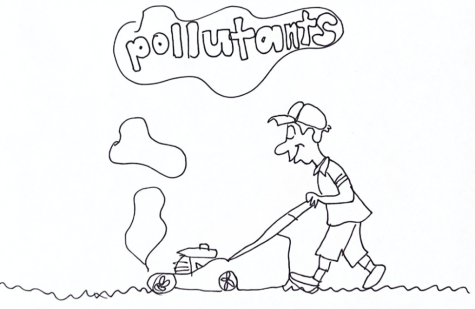The lawns of America demonstrate man’s attempt to harness the uncontrollable forces of nature. Furthermore, Americans pour effort, money and fertilizer into their useless crops, attempting to climb their community’s suburbian hierarchy. Grass, a crop purely for aesthetic purposes, has become a status symbol, one that perpetuates false ideals of self-worth and success. Clearly, grass is an ineffective crop incapable of producing anything worthy. Water consumption and greenhouse gas emissions from grass should be analyzed in a step towards replacing this outdated and impractical greenery.
the uncontrollable forces of nature. Furthermore, Americans pour effort, money and fertilizer into their useless crops, attempting to climb their community’s suburbian hierarchy. Grass, a crop purely for aesthetic purposes, has become a status symbol, one that perpetuates false ideals of self-worth and success. Clearly, grass is an ineffective crop incapable of producing anything worthy. Water consumption and greenhouse gas emissions from grass should be analyzed in a step towards replacing this outdated and impractical greenery.
Where did this insane idea for growing grass even come from? British royalty. In England, rain is constant, meaning grass won’t demand the same amount of the drinking water supply. After World War 2, soldiers returning home to increasing industrialization found money and used it for lawns, a constant reminder of leaving their agricultural careers behind for modern sophistication. But why grass? When we look back to the “roots” of these lawns, curiosity just grows.
According to the EPA, “Nationwide, landscape irrigation is estimated to account for nearly one-third of all residential water use, totaling nearly 9 billion gallons per day.” This extreme use of water is unbelievable, especially when California residents continue to feed their thirsty lawns despite the overhanging threat of a drought. Do these lawns really provide Americans with enough happiness to make up for all the effort poured into the maintenance?
Furthermore, the upkeep of lawns causes extreme amounts of unnecessary carbon emissions. According to Only Natural Energy, emissions from grass fertilizers create 25 million tons of carbon dioxide each year in the US. Americans feed billions of dollars every year into sustaining these lawns, not to mention the excessive amount of maintenance they require. It turns out that your gas mower is creating tons of harmful pollutants in the atmosphere. As the Utah Department of Environmental Quality shares, “The emissions from one four-stroke lawnmower operating for an hour are equivalent to an average vehicle traveling 500 miles.” Additionally, rainwater runoff from lawns can transport pesticides and fertilizers into oceans or local water sources, harming animals, humans, and contaminating seafood and water sources. Every aspect of the American lawn: the fertilizers, pesticides, mowing and cutting, all work together to destroy the environment.
Though many Americans think they are providing their own carbon sink in their front yard, evidence shows that grass does much more harm than good to combat the threat of global warming. Evidently, grass soaks up some carbon from the air, as it carries out photosynthesis, but mowing lawns with gas powered machines along with manufacturing and overusing fertilizers and pesticides reverse those potentially beneficial effects. According to Only Natural Energy, “standard lawns emit about 5 or 6 times more CO2 than what is absorbed during photosynthesis.” Finding alternatives to lawns is simple; grow gardens with fresh, edible foods, reducing grocery money and supplying natural foods into the American diet. Rather than tending to an inedible crop, why not grow fruits and vegetables, and replace the hours spent mowing the lawn with a rewarding hobby of gardening? Another evident alternative would be fake turf grass. Despite being more expensive upfront, it will save you in the long run, as real grass consumes money in its need for water, fertilizer, mowing and more. Even if you love your lawn and the devotion it requires, at least replace your gas-guzzling and carbon releasing mower with an electric one!
The absurdity of lawns and the odd traditions behind them is clear. While the existence of lawns is rarely criticized, it should be.







